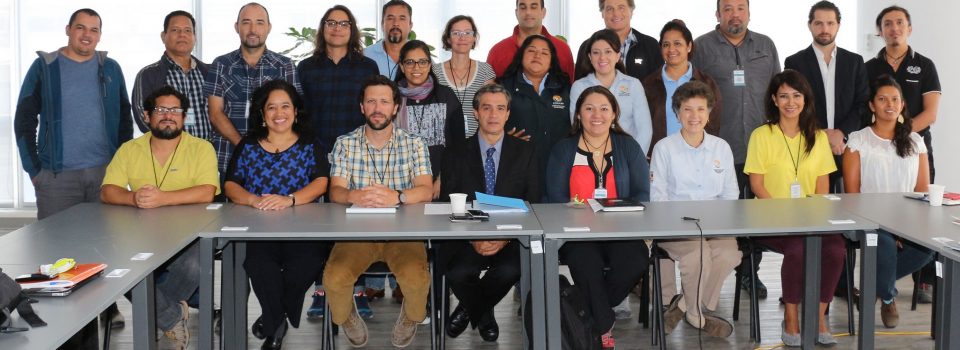Workshop was held in Mexico to conserve the Leatherback turtle
July 11th, 2016
20 experts from various countries participated in the International Workshop to reduce by-catch. From Chile, the researcher Jorge Azócar of IFOP attended.
CONANP coordinates national efforts to preserve the specie, through the Program of Action for Conservation.
Under the International Day of the Sea Turtle and the 50 years of the National Program for the Conservation of Sea Turtles in Mexico, the National Commission of Natural Protected Areas (CONANP, according its abbreviation in English), International Workshop was held to reduce the incidental catch of Leatherback turtle (Dermochelys coriacea) in the Eastern Pacific.
In the Workshop there were 20 experts from Mexico, United States, Nicaragua, Costa Rica, Colombia, Peru and Chile, who conform the Leatherback Eastern Pacific Net Recovery, which was initiated in 2012 and formalized in 2015, and has as aim to exchange experiences, make recommendations and promote coordination between countries for the recovery of this specie.
At the closing ceremony, Jose Francisco Bernal Stoopen, Director of Priority Species for Conservation, stressed the importance of preserving one of the most endangered species in the world and mentioned the importance of being part of the Network for the Recovery of the Leatherback turtle of the Eastern Pacific as it adds to the work of researchers and conservationists to solve the current problem in Mexico.
He said that for a long time they have tried to reduce threats, by-catch and identify possible solutions and, above all, recover the numerical quantity of this specie.
One of these tasks is to create spaces that allow discussion and exchange of knowledge, so this workshop aims to identify priority areas for reducing by-catch of this chelonian.
During the 3-day meeting, experts exchanged views on various conservation strategies to reduce by-catching and achieve increased production of offspring.
 Issues related to capacity increasement for rapid assessment of by catch in Mexico, Nicaragua, Costa Rica and other countries were addressed.
Issues related to capacity increasement for rapid assessment of by catch in Mexico, Nicaragua, Costa Rica and other countries were addressed.
They delved into the issue of standardization on the collection and analysis of information on bycatch and nesting; also they discussed on priority actions for the conservation of this chelonian.
CONANP nationally coordinate conservation efforts for this species, through the Program of Action Conservation (Pace- Leatherback turtle) with the aim of establishing a comprehensive recovery strategy with specific actions which include the knowledge generated on its biology and its interaction with all the involving parties.
Among the main results obtained by the CONANP, it stands out the 100% coverage of the season in the major nesting beaches with an average over 90% of protected nests.
During the last season, 694 nests were recorded, being Barra de la Cruz beach in Oaxaca which won as many females quantity, and protection efforts netted in 21.741 hatchlings released.
The Eastern Pacific leatherback turtle is one of the most endangered in the world. It is classified as Critically Endangered by the International Union for Conservation of Nature (IUCN), Endangered by NOM 059 SEMARNAT 2010, and in Appendix I of the Convention on International Trade of Endangered Species of Wild Fauna and Flora (CITES).
It is the world’s largest sea turtle, can measure up to 2 meters and weigh up to 900 kilograms. It has no scales, corneas or nails, and its shell is covered with a soft leathery skin.
It is highly migratory specie. Females lay 5 nests per season on average, and each has between 50 and 80 eggs. The incubation period is of 60 days, and they reproduce every 2 to 3 years.
In Mexico is mainly distributed in the Pacific, with sporadic presence in the Caribbean. In four beaches, nesting is recorded: Mexiquillo, Michoacán; Tierra Colorada, Guerrero; Cahuitán and Barra de la Cruz, Oaxaca; with less but significant density in Parque Nacional Bahías de Chacahua, La Tuza and Piedra de Tlacoyunque.
Source: CONANP press release
